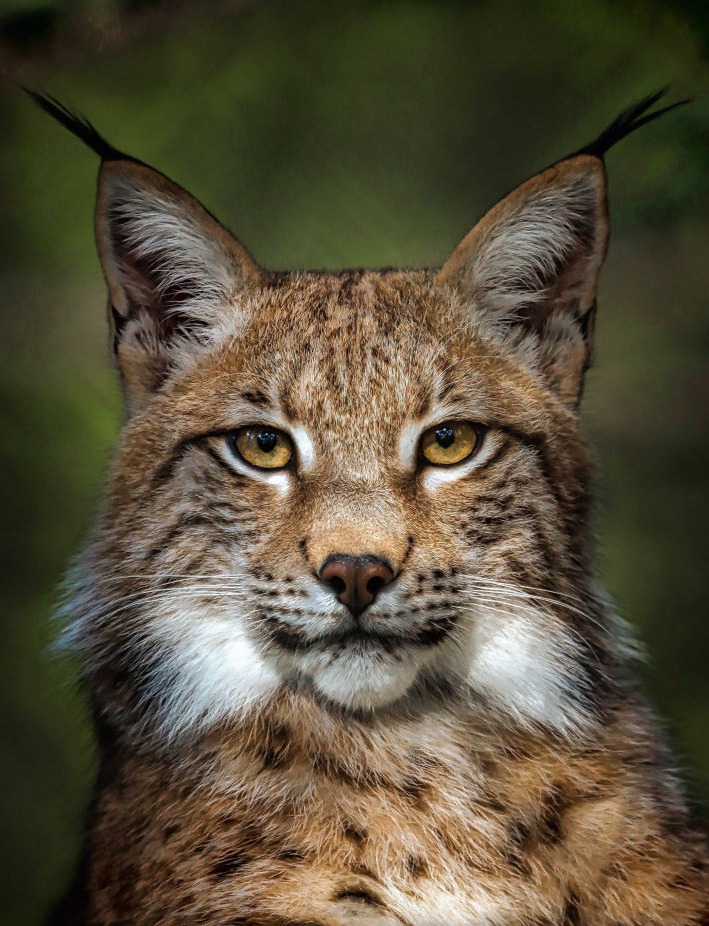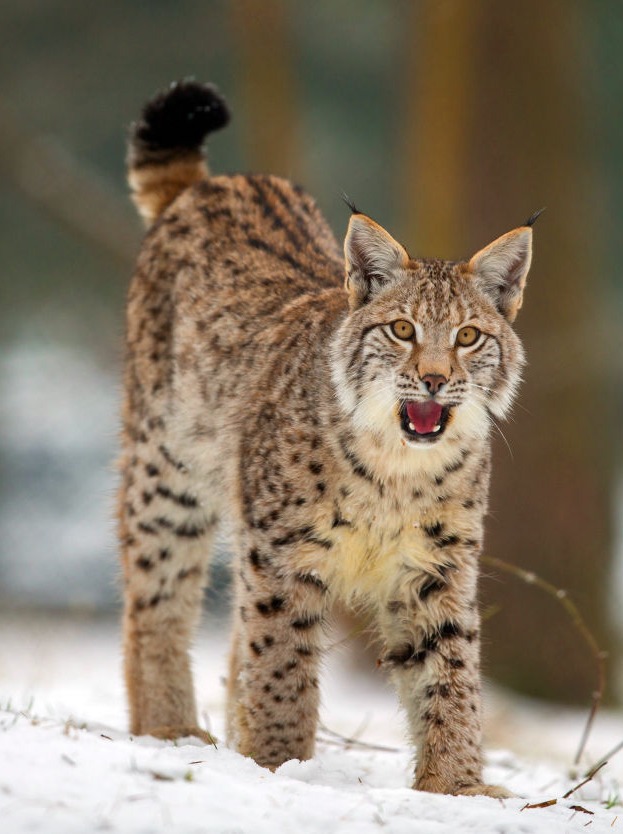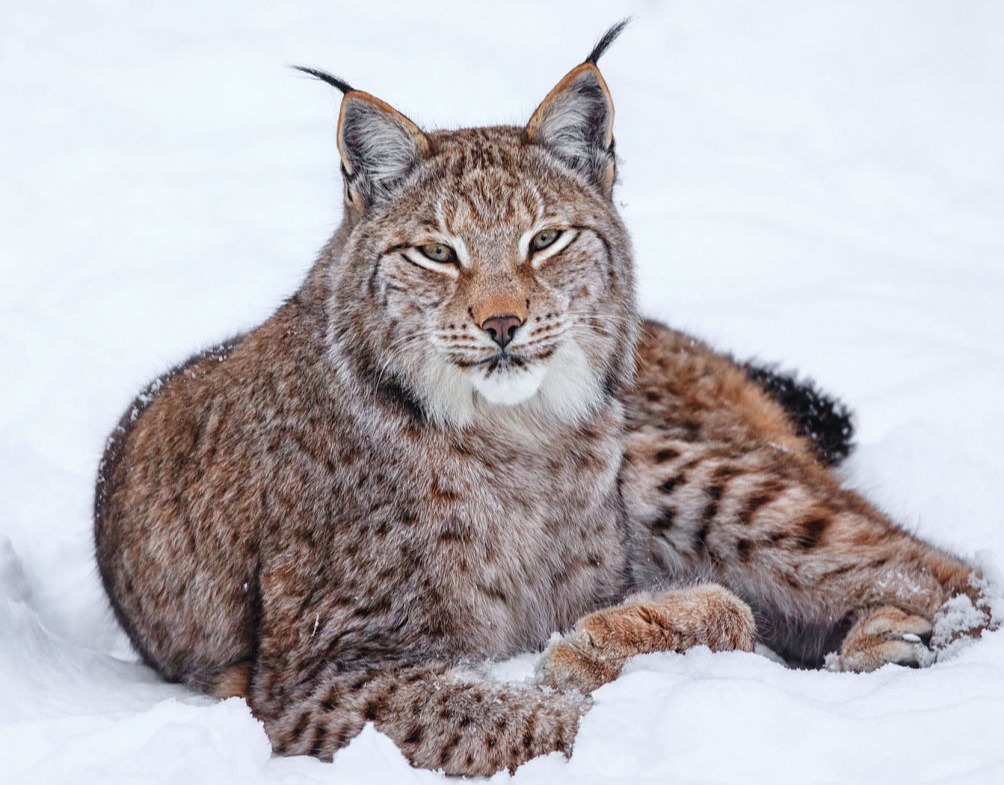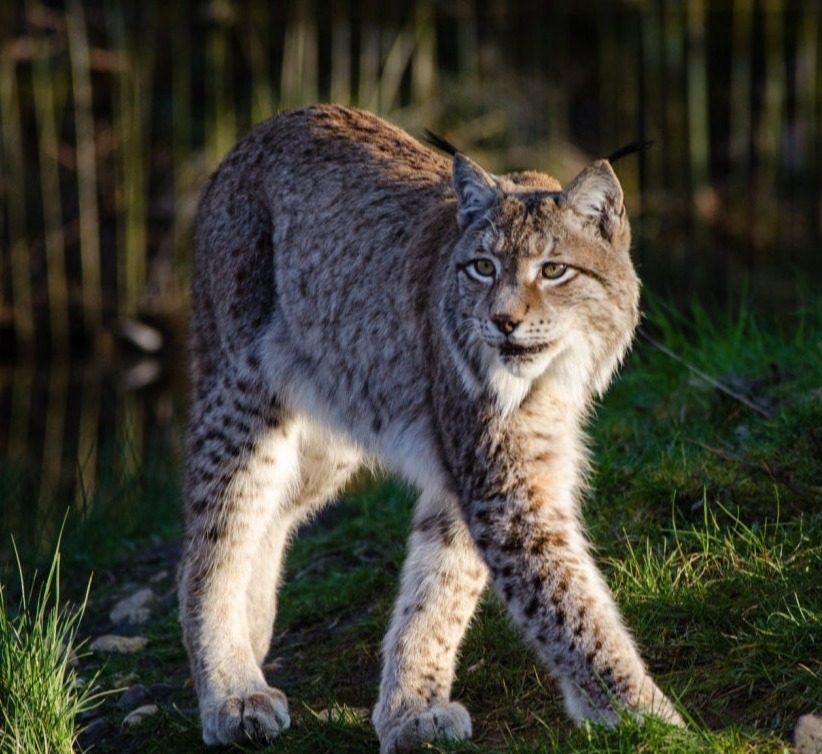
External Description
The lynx does indeed resemble a very large cat, differing only in its short tail and tassels on the tips of its ears. Its weight usually does not exceed 25 kg, and its body length can be from 75 to 130 cm.
The body is dense with a small round head. The muzzle is framed by an elongated, stiff coat similar to sideburns. The fur is very dense, especially in winter, when the undercoat appears. Most often there are animals with a reddish-gray color and dark spots, chaotically located throughout the body. But the color of the coat depends on the species and on where the lynx lives, in what zone, so it can be of a different shade.
The limbs in their structure are somewhat different from those of cats. The rear paws of the lynx are longer than the front ones and have only 4 toes. In winter, the pads are covered with thick wool, which allows the animal to move easily in the snow without falling through drifts. Paws seem too wide for such a small animal, but it is this structure helps the predator to successfully hunt, extracting food.
Beautiful tassels on the ears act as an antenna, thanks to which the lynx can perfectly hear the quietest sounds. This animal is excellent at jumping (up to 4 meters in length), climbing trees and very fast running. Like all representatives of the cat family, it is distinguished by its strength and extraordinary agility.


